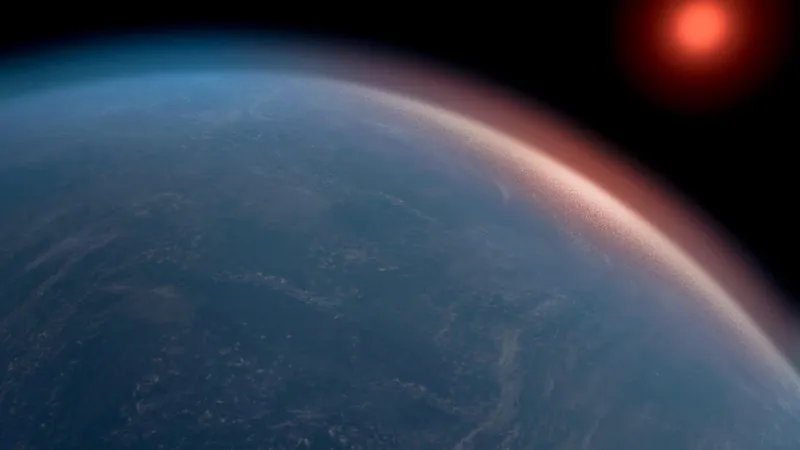
Astronomers Unveil Thrilling Possibility of Alien Life on K2-18b!
2025-04-27
Author: Chun
Possible Signs of Life on Distant Exoplanet K2-18b!
In a groundbreaking revelation, astronomers are on the brink of a sensational discovery that could support the existence of life on the exoplanet K2-18b, which is located 124 light-years from Earth.
Led by a team from the University of Cambridge, researchers used the cutting-edge James Webb Space Telescope to identify chemical signatures of dimethyl sulfide (DMS) and/or dimethyl disulfide (DMDS). These compounds are typically produced by life forms, such as phytoplankton, thriving in aquatic environments.
According to the researchers, these findings represent the most compelling evidence yet suggesting that extraterrestrial life could indeed exist beyond our solar system.
An Oceanic Wonder!
The findings, recently published in the Astrophysical Journal Letters, hint at the existence of vast oceans on K2-18b—something scientists have eagerly anticipated for years. The team elaborates, "The possibility of hycean worlds with planet-wide oceans and hydrogen-rich atmospheres dramatically enhances our search for habitable conditions in the universe."
Skepticism in the Air!
Despite the excitement, not all experts are convinced that these findings equate to proof of life. Science writer Corey S. Powell cautioned on Bluesky about the potential pitfalls of premature claims, stating, "The lure of discovering alien life leads even credible outlets astray with potential misinformation. There are strong indications of non-biological origins for the DMS molecule."
The Quest for Life Continues!
K2-18b, significantly larger than Earth, serves as a vital point in understanding the universe's potential for habitability. If these early observations of life-like chemistry are confirmed, it could mean more planets exist with Earth-like conditions, supporting human-like life forms.
However, Christopher Glein, a geochemist at San Antonio's Southwest Research Institute, emphasizes the importance of tempering excitement. He states, "Although there are intriguing signals in the data, they require careful verification. This detection is pushing the limits of what the James Webb Space Telescope can achieve."
Next Steps in Astrobiology!
Glein insists that further research is critical to discern whether these molecules actually exist and to explore alternative chemical processes on K2-18b that could occur without life. He adds, "Finding evidence of life takes robust corroborative evidence, like a court case needing multiple lines of credible support."
As interest shifts toward planets such as the TRAPPIST-1 system and LHS 1140b, K2-18b remains a hot topic of exploration. As Glein succinctly points out, "If these findings are validated, this could be just the first step toward unraveling the mysteries of extraterrestrial life!"




 Brasil (PT)
Brasil (PT)
 Canada (EN)
Canada (EN)
 Chile (ES)
Chile (ES)
 Česko (CS)
Česko (CS)
 대한민국 (KO)
대한민국 (KO)
 España (ES)
España (ES)
 France (FR)
France (FR)
 Hong Kong (EN)
Hong Kong (EN)
 Italia (IT)
Italia (IT)
 日本 (JA)
日本 (JA)
 Magyarország (HU)
Magyarország (HU)
 Norge (NO)
Norge (NO)
 Polska (PL)
Polska (PL)
 Schweiz (DE)
Schweiz (DE)
 Singapore (EN)
Singapore (EN)
 Sverige (SV)
Sverige (SV)
 Suomi (FI)
Suomi (FI)
 Türkiye (TR)
Türkiye (TR)
 الإمارات العربية المتحدة (AR)
الإمارات العربية المتحدة (AR)